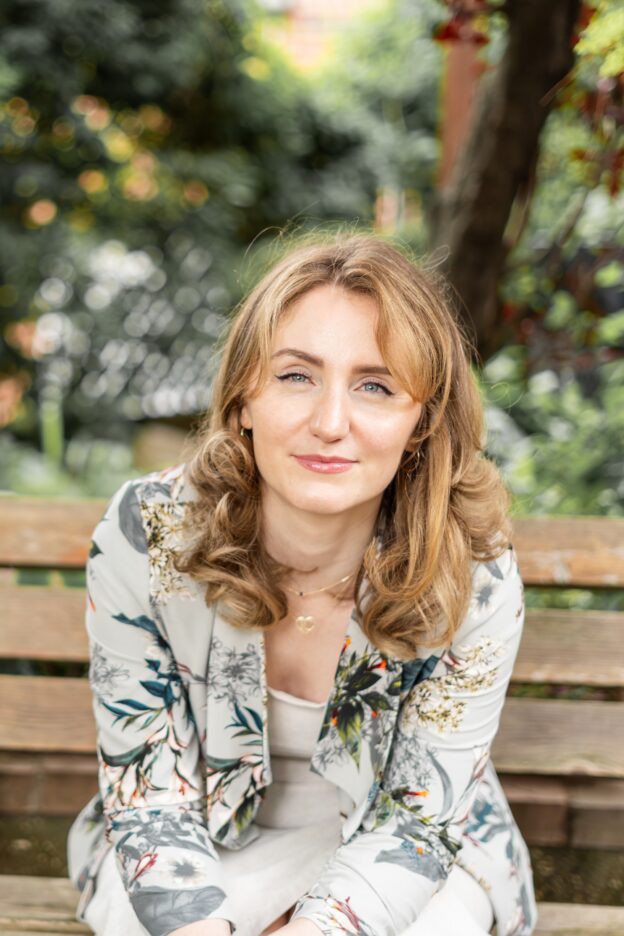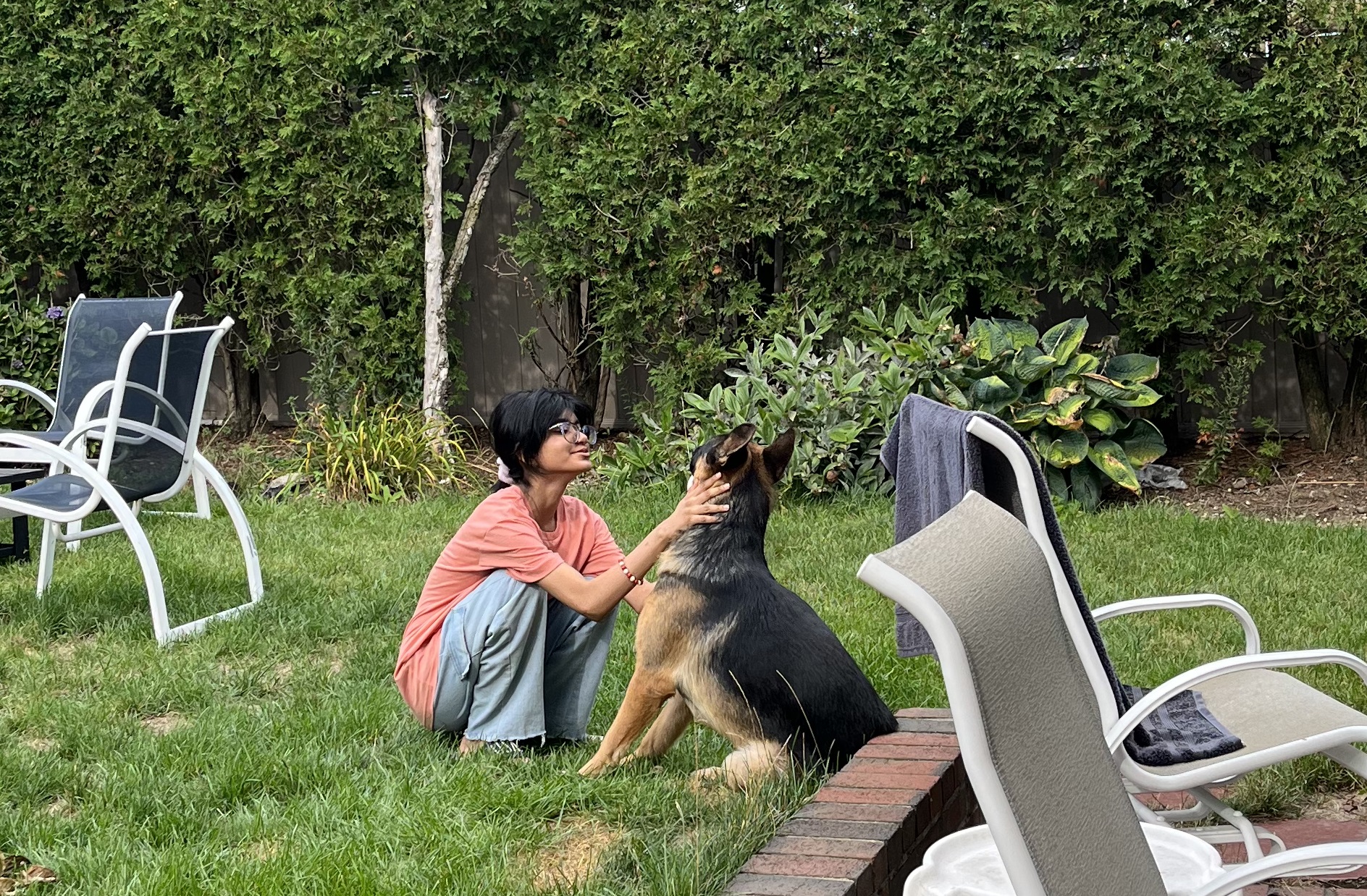 One of the most heartbreaking—and hopeful—things we do here at The Child Center of NY is work with young people who have thought of or attempted suicide. We know that each one of them has so much to give, and we take seriously our job to help them see it, too.
One of the most heartbreaking—and hopeful—things we do here at The Child Center of NY is work with young people who have thought of or attempted suicide. We know that each one of them has so much to give, and we take seriously our job to help them see it, too.
Diana Michelena is one of the Child Center team members who takes on this vitally important job every day. Diana is the program coordinator for our Youth Intensive Outpatient Program (Youth IOP) and Bridge to Hope program, both of which work with young people who have had previous suicide attempts to get the support and guidance they need while remaining at home with their families. At The Child Center of NY, we never consider it too early or late to start young people on the path toward healthy and fulfilling lives they are proud to live.
In honor of Suicide Prevention Month, we asked Diana to share her thoughts on the importance of suicide prevention, and how we all can play a role.
The Child Center of NY: The statistics surrounding suicide have been really scary. For example, the CDC’s recent Youth Risk Behavior Survey found that three in five teen girls felt persistently sad and hopeless; more than one in five LGBTQ+ youth attempted suicide. Are you seeing these troubling trends on the ground?
Diana Michelena, LMHC: In the Youth IOP and Bridge to Hope programs, we work with youth who have a history of suicide attempts, a history of self-harm, or severe depression. I think the current climate we live in is impacting their mental health: for example, going through a pandemic, with the isolation we all felt during that time, and other isolating factors, such as social media or spending hours on end playing video games. I have seen an increase in people looking out for, searching for help. But I’m not sure this increase means people were not struggling before. Maybe they didn’t know where to look for help, maybe they didn’t feel safe talking. So this increase might actually be a hopeful sign: More people are reaching out for help, and more people are getting it. And in doing so, they’re realizing they’re not alone, which helps tremendously.
How did you get into this line of work?
I got into psych[ology] and counseling many years ago, back in my home country of Romania during my undergrad studies. I had started seeing a therapist at that time, and I remember what a great impact our work together had on my growth, how much it mattered to have someone who listened and helped me make sense of my own struggles as a child and adolescent. I felt heard and less lonely, and I wanted to be that someone for others too. After earning my undergrad degree in psychology, I completed an M.A. in counseling in Romania and worked for a few years as a kids summer camp leader. Then I moved to the United States and earned a master’s degree in mental health counseling, as the curriculum in Europe is structured differently, and I also needed to meet a few requirements for licensure in New York.
As a Queens girl, I was naturally interested in The Child Center’s clinics. I believed in the mission and had a strong desire to serve the community I lived in. So I interviewed at the Woodside Clinic, now the Cohen Family Wellness Center, with the clinic’s senior program director, Jessica Barrera-Morales, and my supervisor, Jennifer Blitzer, and loved it—loved the place and how it had such a welcoming feel to it, loved talking to everyone, and I got so excited at the thought that I could be one of the clinicians there. I had always worked with kids in some capacity, even in Romania, and I was interested in continuing that work. The Child Center was definitely the route for me—at that time, and it still is.
If there were a golden thread running through your programs, what would it be?
The golden thread is hope. We don’t have an explicit motto, but the entire team leads with hope. We have seen kids going from barely talking in sessions, deeply hopeless, to flourishing. We have seen them ending these programs with being more open, more confident, talking about friends when they didn’t have friends before and being more active in their social life. Something special happens in the therapy groups they attend: They click with each other, they hear and understand each other, and know they are not the only ones feeling the way they do; just like that, they feel less alone. We have several groups, such as a teen depression group, where they talk about the triggers of their sadness; they learn about how negative thoughts form and formulate their safety plan. We also have a DBT group, where clients learn a lot of skills to cope with their depression symptoms and self-harm. They learn how to stop and breathe, mindfulness skills, how to connect with others, how to make new meanings of the thoughts they have, of the negative thoughts that feed into depression. In art groups, they find a way they can express themselves through the arts.
Those sound like great things that help people cope in the “now.” How do you convince people with no sense of hope that tomorrow can be better than today?
I tell my clients I see their struggle and even though life may suck right now, any feeling is temporary, and if we can figure out together what works to keep them afloat during the storm, it will eventually pass. And after that, maybe the next one is a little less painful, the next one even less, and so on. But no matter what, they are not alone! We work with concrete things and look toward the future, but I would say that thinking far ahead comes later. Goal setting far into the future is sometimes really difficult, especially at the beginning of treatment. When someone is feeling hopeless, it’s hard for them to picture what a future looks like. I tell them, that’s OK, I’m here with you in this, and let’s see what are some of the things you can do now. I work a lot with helping clients recognize those signs that feed into the hopelessness. I help them get to the bottom of what triggers those negative thoughts; what’s going on right now, what’s keeping them in that hopeless stage? And, if it’s clear what’s going on—for example, arguments with parents, fights with friends or that they don’t have friends, or maybe they’re feeling lonely or experiencing bullying. If they recognize those signs, what can we do in those moments? We explore tools, resources, and skills, and sometimes practice them together in session. Parents can be a great support in this stage, as they can practice these skills with clients at home, too.
At the same time, I think the greatest impact is showing them they are not alone. I don’t think the goal is to fix things in that moment, but rather for them to know that there is another person that can be with them and hold them and hold that sadness with them—whether that’s their therapist, their friends in group, a guidance counselor, a parent. … Something changes significantly for the better when they don’t feel alone anymore. Toward the end of the program, they gain more clarity of what they want to do and can start picturing a future. This is a really huge thing: seeing kids look to the future again, go to college, pursue what they want to do.
There is a great free, self-paced, interactive online mental health course for young people and their families called the Be There Certificate, which teaches the public to recognize when someone might be struggling with their mental health and how to safely support them while maintaining their own mental health. It’s part of a partnership between The Child Center and Born This Way Foundation. The course provides very useful and valuable information on how to support someone going through a tough time, or even yourself. I encourage everyone to take the course so they can best support people in their lives who might be going through a tough time.
What thought do you want to leave readers with?
I would like folks to know that no matter what they are going through, I truly believe there is always someone to listen, that even though there are many, many hopeless days, there is hope and there is help and there is value in the darkness. I would like to encourage them to stay and discover it, and I would especially like them to know this world is really more beautiful with them in it.
Editor’s Note: If you are actively suicidal, go to your nearest emergency room or call 911. For anyone who is experiencing suicidal thoughts, help is available.
- 988 Suicide & Crisis Lifeline: https://988lifeline.org/
- The Child Center of NY wellness centers: 718-358-8288
- Additional resources: Speaking of Suicide








You must be logged in to post a comment.